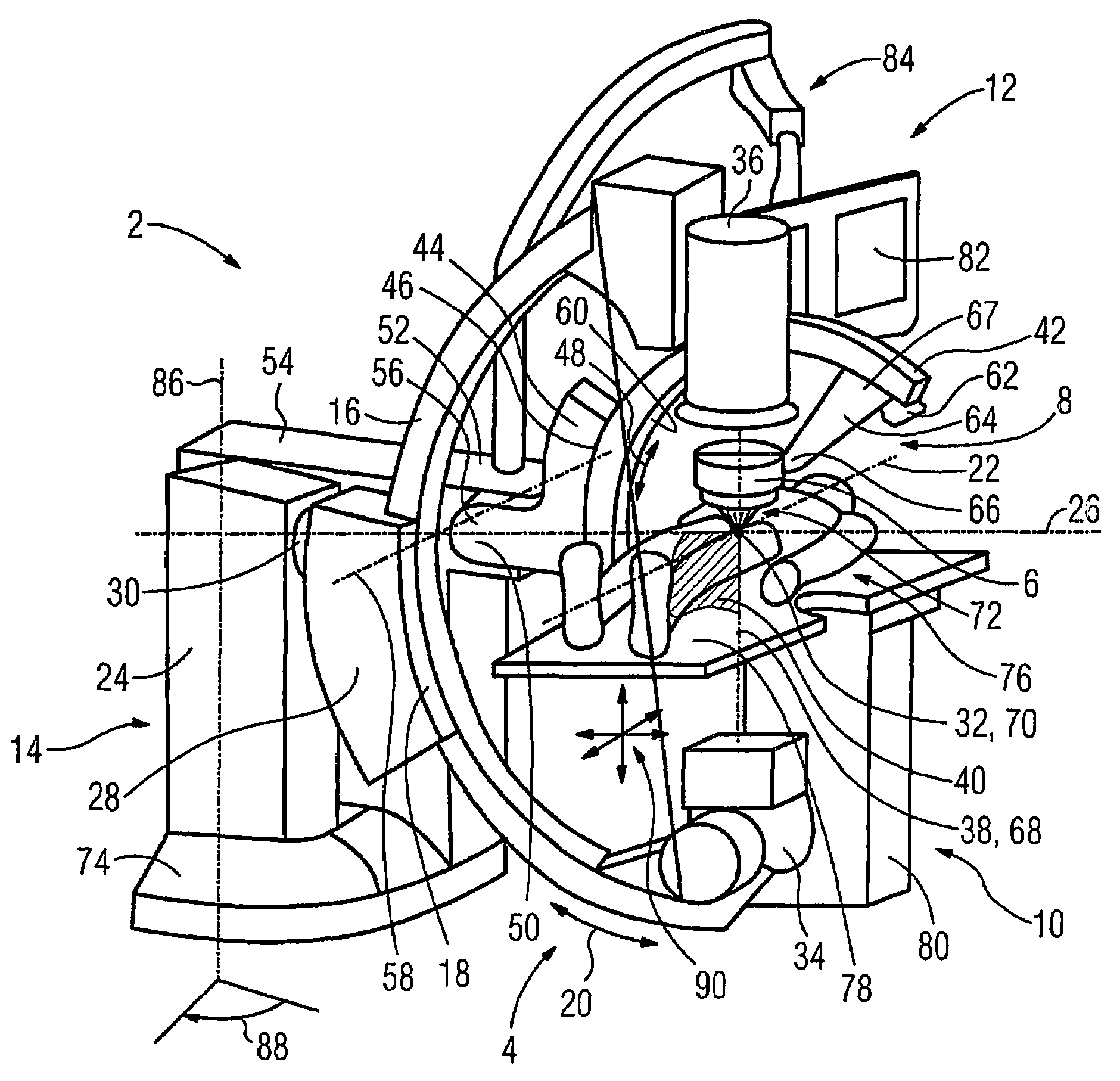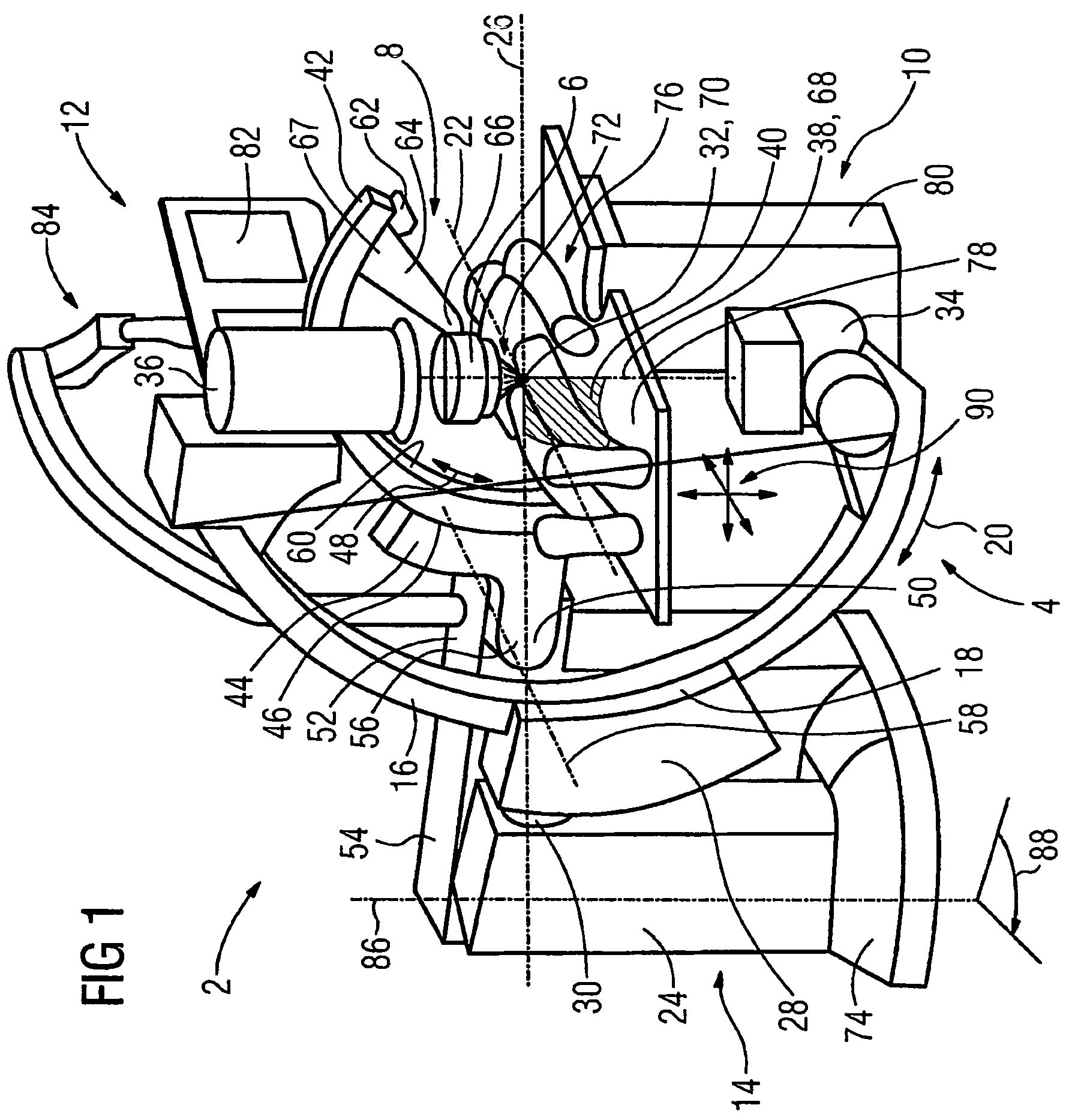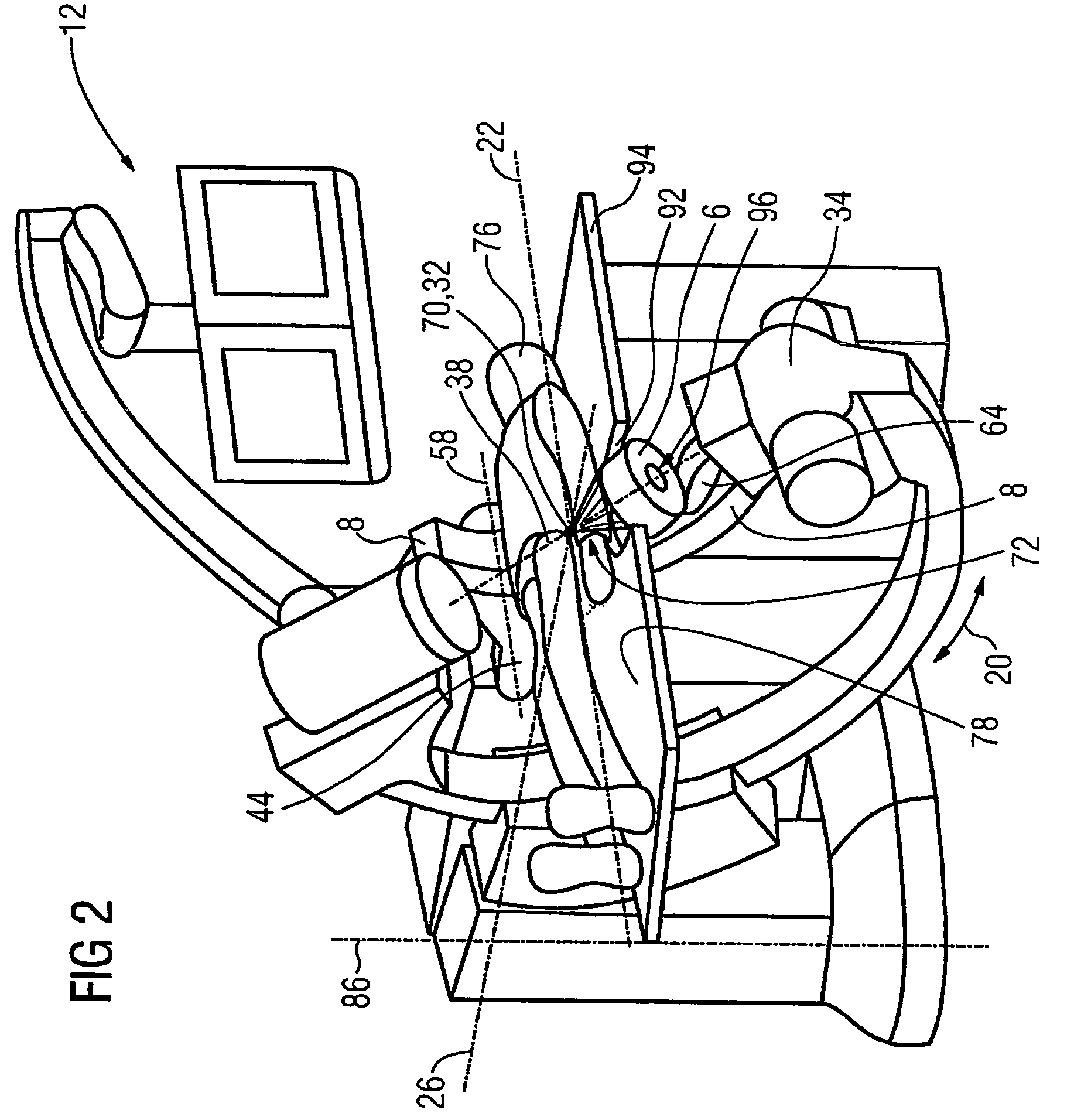Image-assisted shockwave therapy installation
a technology of image support and installation, which is applied in the field of image-supported shockwave treatment, can solve the problems of time-consuming reconstruction and barely possible displacement of the patient table running horizontal and parallel to the orbital plane operating system, and achieve the effect of sufficient freedom of movemen
- Summary
- Abstract
- Description
- Claims
- Application Information
AI Technical Summary
Benefits of technology
Problems solved by technology
Method used
Image
Examples
Embodiment Construction
[0024]FIG. 1 shows an SWL system 2 in a first embodiment that has the following sub-components: an x-ray C-arm 4, a therapy C-arm 8 (bearing a shockwave head 6 and characterizing the first embodiment) as a carrier device, a patient table 10 and a display module 12. The x-ray C-arm 4 has a two-part base body 14 on which a C-arm segment 16 is movably supported. A segment-shaped support 18 (not visible) is present in the base body 14 for this purpose, in which support 18 the C-arm segment 16 is forcibly guided, optimally without play. The C-arm segment 16 can therefore be moved one-dimensionally in the orbital direction indicated by the double arrow 20.
[0025]The two-part base body 14 has a base 24 that is stationary at rest. A guide 28 that can rotate around a pivot axis 26 proceeding horizontally is attached on this base 24 via a swivel joint 34. The pivot axis 26 intersects a longitudinal axis 22 at an isocenter 32. The x-ray C-arm 4 can be moved angularly around the pivot axis 26. T...
PUM
 Login to View More
Login to View More Abstract
Description
Claims
Application Information
 Login to View More
Login to View More - R&D
- Intellectual Property
- Life Sciences
- Materials
- Tech Scout
- Unparalleled Data Quality
- Higher Quality Content
- 60% Fewer Hallucinations
Browse by: Latest US Patents, China's latest patents, Technical Efficacy Thesaurus, Application Domain, Technology Topic, Popular Technical Reports.
© 2025 PatSnap. All rights reserved.Legal|Privacy policy|Modern Slavery Act Transparency Statement|Sitemap|About US| Contact US: help@patsnap.com



